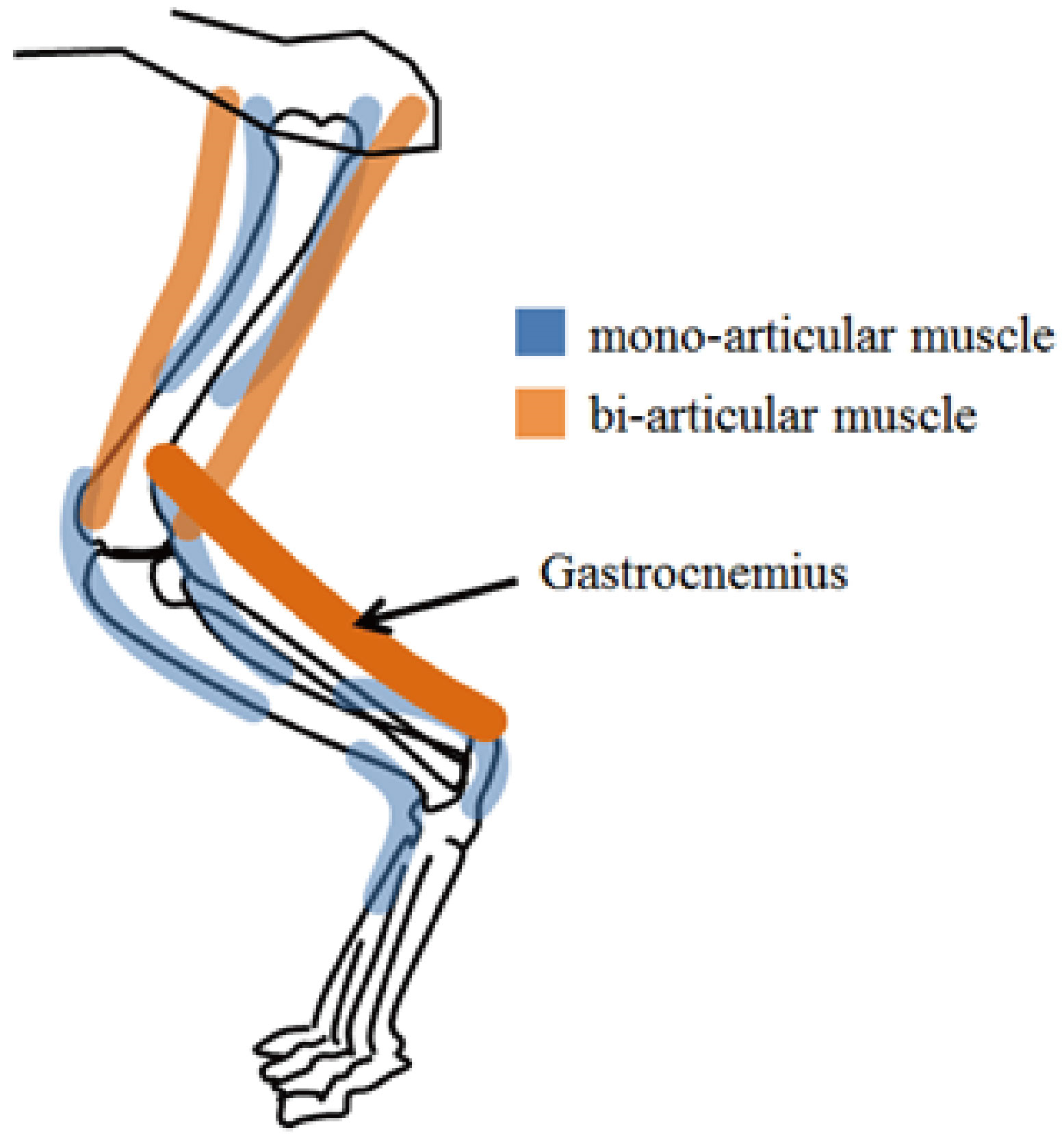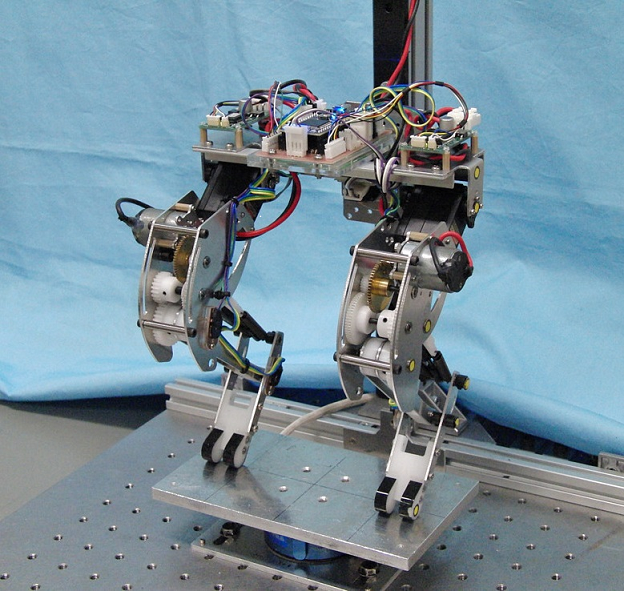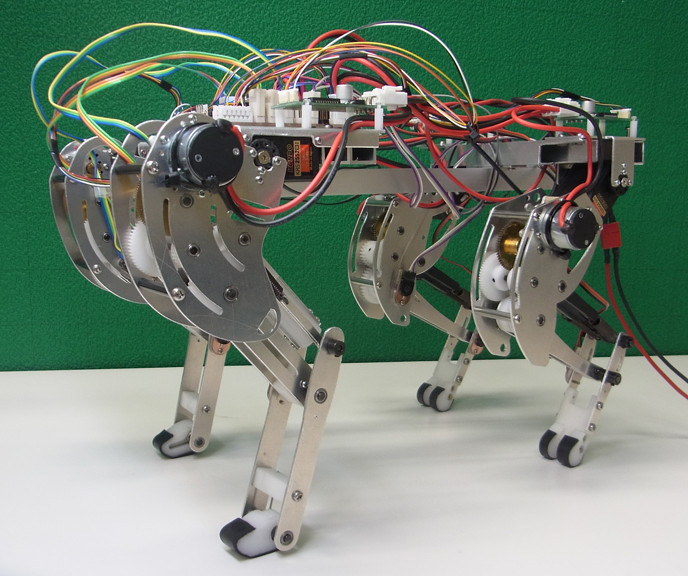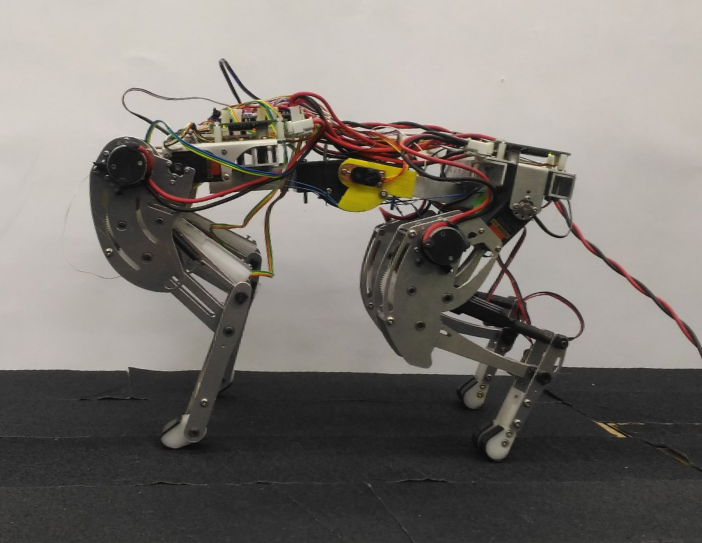![[PukiWiki] [PukiWiki]](image/logo.png)
電気通信大学 明・佐藤研究室 |
Development of quadruped animal like robotThis research group was established in 2013 with the purpose of proposing innovative ideas in the leg motion robots field. Intending to do so, this research is firstly based on the animal’s skeleton and muscles mechanics. More precisely, if we want to go further in this research, there are 2 important points which need to be understood concerning the particularities of animal motion. Leg designIf we focus on the legs of animals capable of advanced motions, we often observe a typical leg shape. The more we get far from the main part of the body the thinner the leg becomes. It is known that his kind of leg shape enables better dynamics for jumping and running. More precisely, when realizing kicking motion, as the leg moment of inertia decreases, the energy required to generate the motion also decreases. Concerning the jumping motion, smaller leg masses enable higher jump. Moreover, this kind of shape is advantageous as it is suited for un-even grounds exploration. Combined action of numerous musclesMost of the robot developed in recent research make the use of several independent actuators in each joints of the legs in order to generate the motion. However, if we focus on the animals, we observe a different mechanism: the joint motion is driven by contracting the muscular fibers. Indeed, many articular muscles work together to move different joints. Among the large number of articular muscles implied in the jumping and running motion, the gastrocnemius - located in the calf - has a significant role. This muscle is linking the knee joint and the ankle joint, hence it is realizing the inter-joint motion between the knee and the ankle. Furthermore, it is storing the energy from the landing and restoring it for next leap in the same way a spring would work. Research and development of leg mechanism based on animal muscle-tendon complexFollowing the principle that the gastrocnemius and the muscle-tendon complex are at the origin of the energy-saving ability and the cooperative muscle operation ability, we are making the combined used of elastic link and electromagnetic actuator with high back-drivability to develop leg design with high compliance and self-stability. Thanks to the compliance of the control system and the elasticity of the design, we can expect a high adaptability and self-stability when confronted to un even-ground leading to highly advanced motion performances. Leg robot inspired from the muscle-tendon complex: “Sugoi-neco Legs”In this research, we successfully developed a robot named “sugoi neco legs” which owns the same abilities as from muscle-tendon complex. Using a vertical guide to limit its jumping range, it could perform successive jumps. Moreover, even if we put obstacle in the jumping zone during the experiment, it is able to keep the same position and continue jumping due to its high compliance. Small size four legged robot inspired from the muscle-tendon complex: “Sugoi-neco”In this research, we successfully developed a four legged robot named “sugoi neco” which owns the same abilities as from muscle-tendon complex. We used the previously designed “Sugoi neco legs” as rear legs, and built a suitable new design for the front legs. Taking inspiration from the cat skeleton, we aimed at realizing front legs more suitable for lending and rear legs more suitable for propulsion. Hence we realized and tested various different models. During the experiments, the final robot could reach a 3.5km/h trot on treadmill and perform a front jump of approximatively its own body length. Development of a bending spine mechanismIn this research, we inspired from the animal to develop a bending spine system. Combining the different leg designs with a spine mechanism had 2 main effects: leg-spine coupling and appearance of a new energy from the spine. Consequently, with these phenomena we could realize a new motion. As a result, adding this spine mechanism enabled to reach better front jump length. |



